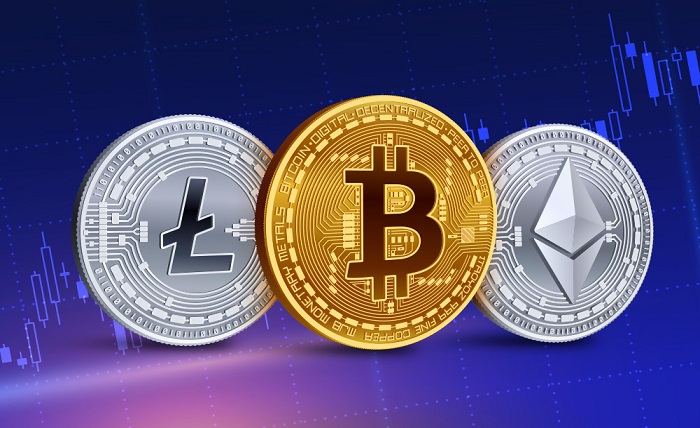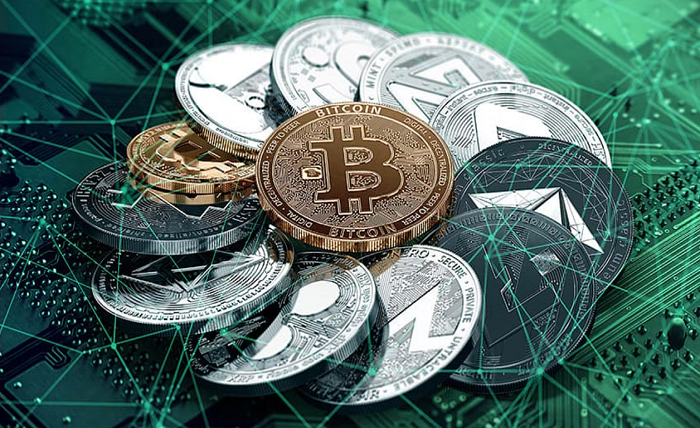The digital asset known as cryptocurrency, which is developed and traded using encryption, has become extremely popular. Many people have been drawn to the concept of a decentralised money that is unrestricted by the government. However, it is cryptocurrency’s ability to transform payments that makes it genuinely revolutionary. The conventional payment methods have limitations and have been used for many years. Contrarily, cryptocurrency promises quicker, less expensive, and more secure transactions. It’s hardly surprising that companies all around the world are beginning to take notice as it has the potential to alter how we pay for goods and services.
We shall examine the various cryptocurrency payment methods used in the USA in this article. We’ll talk about the advantages and drawbacks of using cryptocurrencies for payments while also examining how they might be used in the USA in the future. You will have a better knowledge of how bitcoin is revolutionising payments and how it might alter how we conduct business at the end of this article. In order to experience the fascinating world of bitcoin payments in the USA, buckle up!
History of cryptocurrencies
Since the birth of Bitcoin in 2009, when cryptocurrency first gained traction, it has advanced significantly. A decentralised digital currency that could be used for peer-to-peer transactions without the aid of middlemen like banks was the original concept behind it. Today, there are thousands of different cryptocurrencies, each with its own special characteristics and applications. As a result, cryptocurrencies have become a worldwide phenomenon.
Bitcoin-related vocabulary includes terminology like blockchain, mining, wallets, and decentralised finance (DeFi). The majority of cryptocurrencies are powered by the blockchain technology, which also allows for secure and open transactions. The act of creating new bitcoins by resolving challenging mathematical puzzles is referred to as mining. Cryptocurrency storage and management is done through digital wallets. Decentralised financial applications (DeFi), which employ cryptocurrencies to deliver financial services without the need for middlemen, are a rapidly expanding ecosystem. To fully appreciate the potential of cryptocurrencies and their influence on the world of finance, it is essential to comprehend these ideas.
Uses of cryptocurrencies in the USA
In the USA, cryptocurrencies are becoming more popular as accepted payment methods. Online purchases, peer-to-peer transactions, international money transfers, and micropayments are just a few uses for it. Several businesses have started taking Bitcoin and other cryptocurrencies as payment, including Microsoft, Overstock, and Subway.
Customers may now buy goods and services online more easily thanks to the acceptance of cryptocurrency payments by online merchants like Shopify and Etsy. With the advent of decentralised marketplaces like OpenBazaar, which enable users to purchase and sell things without middlemen, peer-to-peer transactions have grown in popularity. Due to its speed and low transaction costs, cryptocurrency is also becoming more popular for sending money internationally.
Lastly, the accessibility of micropayments, or little transactions, is increasing with the use of cryptocurrencies, making it simpler to pay for online goods and services. In conclusion, there are many and expanding use cases for cryptocurrency payments in the USA, and it is obvious that the practise of accepting it as payment will only rise.
Advantages of Cryptocurrency Transactions
Payments made with cryptocurrencies have a number of advantages over conventional payment methods. First off, they process transactions faster, taking only a few minutes as opposed to hours or days. It is also more affordable because transaction fees are reduced, with certain cryptocurrencies charging nearly nothing.
The greater security and anonymity offered by bitcoin payments is another benefit. Blockchain technology protects transactions, ensuring that they cannot be changed or reversed. Users also have more control over their personal data because they are not compelled to give sensitive financial information in order to complete transactions.
These arguments are supported by data and statistics. A Deloitte study found that 40% of millennials have used or invested in cryptocurrencies, demonstrating their rising popularity. Furthermore, BitInfoCharts data demonstrates that the average Bitcoin transaction price is less than $2, in contrast to more conventional payment methods like wire transfers, which can cost as much as $40.
Overall, compared to traditional payment methods, cryptocurrencies payments offer quicker, less expensive, and more secure transactions, making them an appealing choice for both consumers and organisations.
Risks and Challenges of Cryptocurrency Payments
While there are many advantages to cryptocurrency payments, there are also some risks and difficulties to take into account. Volatility, or the quick and unpredictable changes in bitcoin values, is one of the main problems. Because of this, using cryptocurrencies as a store of value or for regular transactions may be challenging.
Lack of regulation is another issue, which exposes consumers to fraud and con games. Additionally, only a small percentage of people and companies have accepted cryptocurrency as a form of payment.
Examples of people and businesses who used cryptocurrencies for payments and had negative effects include the 2014 collapse of the Mt. Gox exchange, which cost millions of dollars’ worth of Bitcoin. Additionally, some companies have had trouble processing bitcoin payments. For instance, the restaurant chain Subway had to cease taking Bitcoin due to technical difficulties.
Overall, while using bitcoin for payments has numerous advantages, it’s vital to think about the risks and difficulties that could arise.
The US’s future of cryptocurrency payments
Given the growing adoption of cryptocurrencies by big firms and the potential for integration with established payment systems, cryptocurrency payments in the USA appear to have a bright future. Cryptocurrency will likely continue to gain acceptability as more companies and people learn about it, leading to a rise in its use as a payment method.
Experts anticipate the emergence of new payment technologies that will use blockchain technology to build quicker, more secure payment systems. Additionally, the ability to switch between conventional and digital currencies may be made possible via the integration of cryptocurrencies with established payment systems.
Overall, experts believe that the future of cryptocurrency payments in the USA is promising and exciting, and they expect that growth and innovation will continue in the years to come.
Conclusion
Payments made with cryptocurrencies have a number of advantages over conventional payment methods, including quicker transactions, fewer fees, more security, and enhanced privacy. It is obvious that bitcoin has the potential to revolutionise payments in the USA, notwithstanding the potential hazards and difficulties linked to its use.
Cryptocurrency is being utilised in many different ways, from online purchases to international money transfers, and more companies and people are accepting it as a form of payment. Additionally, according to experts, new payment methods will develop and cryptocurrencies will be integrated into established payment methods, increasing consumer convenience and accessibility.
It’s critical to stay up to date on the most recent advances in cryptocurrency payments as the world gets more digital. We urge readers to learn more about this subject and weigh the benefits and drawbacks of transacting with cryptocurrencies. Cryptocurrency is a fascinating and interesting area to monitor in the next years due to its potential to change the payment landscape.
Read More You May Like:














Post Comment